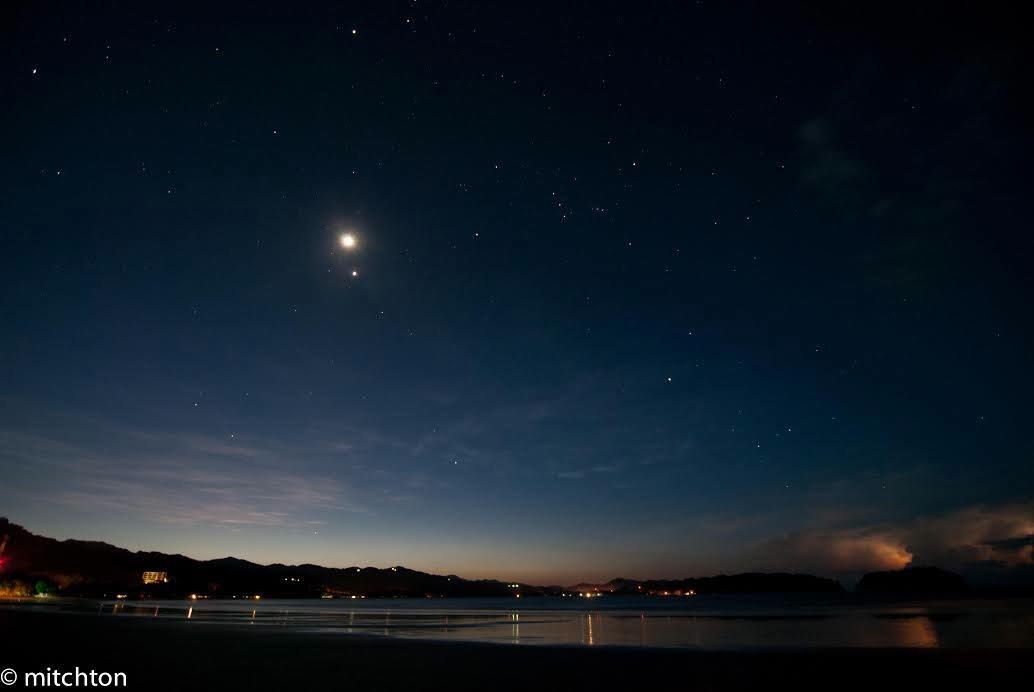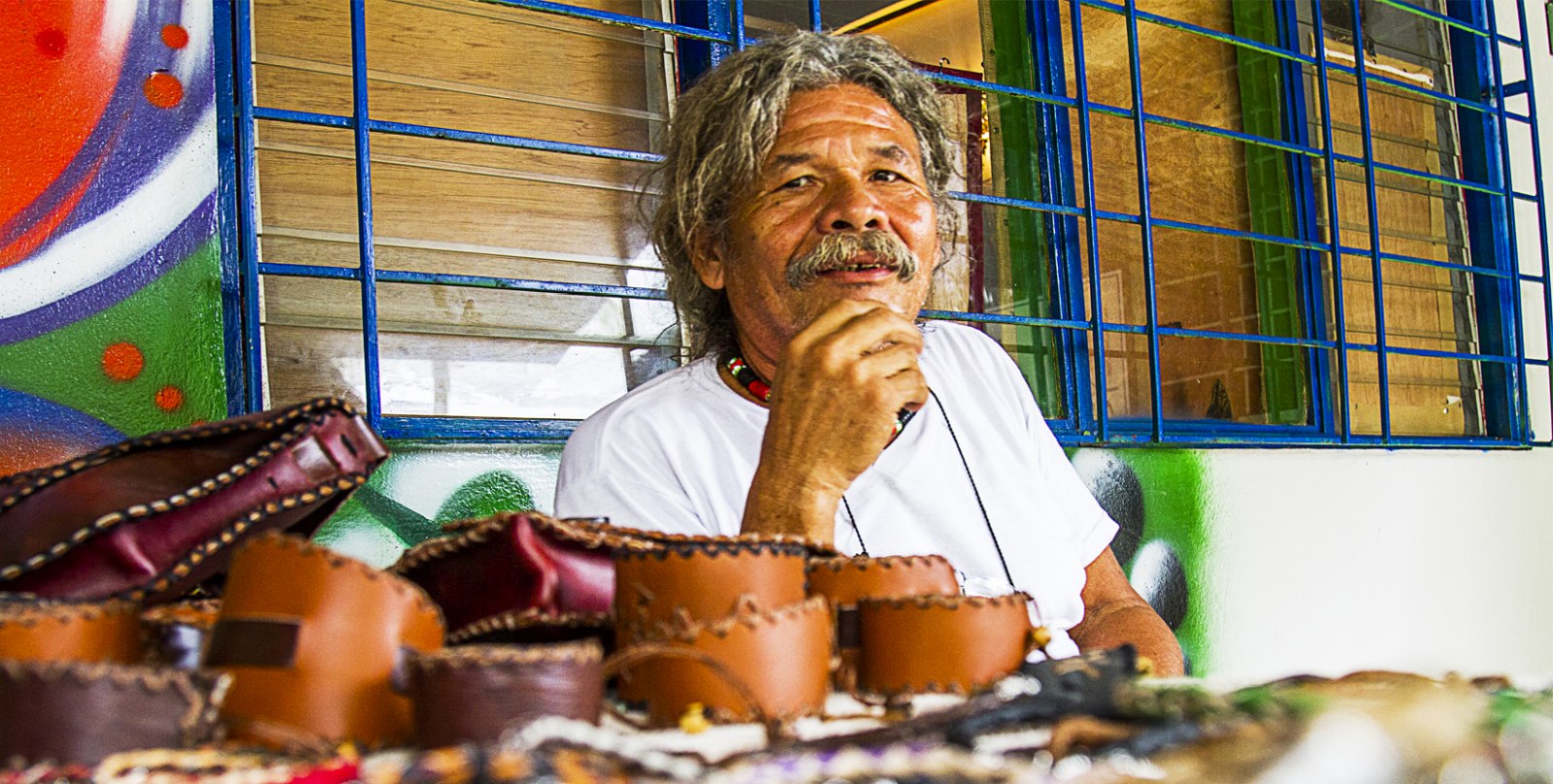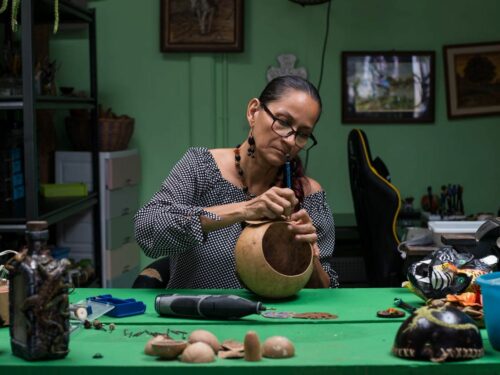
I met an interesting guy on the bus last week who has lived in Samara since childhood. He told me that if I was going to write about Samara, I needed to write about the real Samara. What my new friend meant was that I needed to write about Samara as it was and the old timers who are still here. That sounds fascinating to me and I plan to follow up on some of his suggestions, but I don’t think the real Samara is just its past. The real Samara is not a history museum, but a community that is evolving and building on its rich heritage. The real Samara is made up of people who were born here, people who ended up here and people who chose this place when they could be anywhere. All of them make this community what it is.
For example, Omar and his son Martin have traveled the world, but for the past 4 years they have been in Samara. Omar is originally from Colombia. He left when he was 20 and roamed South America, where he met a beautiful Belgian girl who took him to Europe and gave him three daughters and two sons, including Martin. Omar and Martin have seen Europe, Africa and the Americas and their business, Arte Sin Fronteras (Art Without Borders), has gone wherever they did.
Arte Sin Frontera represents a lifetime of creativity that is being passed down to all five members of the next generation. It is the expression of exquisite craftsmanship built on a foundation of Colombian traditions from the Huila area near the San Agustin National Archeological Park. Omar brought his knowledge of pre-columbian forms and age old techniques through all of his travels. He applies his skills to local materials and strives to reuse and recycle whatever he can. His workshop in the Natural Center in central Samara is filled with delights made of brass, electrical wire, antique metalware, shells, bamboo and leather. His skill allows him to completely transform objects into fine art, fine jewelry and high quality crafts. Much is from Omar’s history and imagination, but give him a week or so he can also craft pieces to the specifications of buyers.
It used to surprise me to find people like Omar and Martin in Samara. On a casual visit, one might see only a sleepy beach town, but it is so much more. Samara has become a melting pot of artists and craftspeople, both locally grown and from around the globe, who thrive on the energy here. Musicians, painters, jewelry makers, chefs, graphic designers, sculptors, authors…the variety and sophistication of the artistic community is immense for such a small place. Why?
As an artist, I can tell you that place matters. Community matters. Samara attracts and invigorates artists – dreamers who are also doers. I understand there are some young men in town trying to create a cultural center in Samara and in the next few weeks I hope to talk to them and share with you their vision and the obstacles to achieving it, but for now I just want to get as many people as possible thinking about what we have here, how special this place is, and how to protect and encourage it. I also want to ask readers to tell me about other community members who are creating here. Please send information and comments to [email protected]
Now back to my friend on the bus. He told me something I did not know about Samara. The little island off the coast, Isla Chora, was named for a local shellfish, now long gone from the bay. Local craftsman were once known for beautiful carvings from local materials including fine black coral and Chora shell. I have not been able to find any more information on the name. The word Chora has many meanings and uses around the world.
Plato used it to describe a place where forms materialize, which also seems appropriate. I cannot find anything about the local meaning, but I don’t doubt my friend’s story. The Internet does not know everything. And really, the word is not so important as the long tradition of carving and using what is on hand, shell and black coral found on the beach (my friend tells me the best black coral was never collected in dives as it was too deep and only used when found washed up on shore) or recycled silverware, or coconut shells. It connects the old timers to the new arrivals. Omar and Martin are continuing an old Samara tradition, even if they were not born here. Even though the Chora shells have gone from the bay, the tradition stays strong in the hands of Omar, Leo at Dragonfly and Carlos at Cocotales and countless others who come here from other places to create and grow as craftsman. They may think they came for the beach, or to sell to tourists but there is a lot more to it.







Comments